September is a good time for viewing Etosha's wildlife, as it is near the end of the dry season and the water sources for the animals are very limited. The few waterholes left are drawing in an enormous variety of different species.
Elephants often move to and from the waterholes on narrow, well-defined paths. You can therefore predict quite easily where they will cross a road – but you have to be sensible: they do not take kindly to you coming too close, especially in a moving vehicle.
We got very close to this black rhino, largely because it appeared to change its mind about the path it was going to take and headed straight for us. For a moment it seemed to consider head-butting our (stationary) vehicle, but fortunately it decided to leave things at a stern glance in our direction and trotted off into the bushes.
Black rhinos are a critically endangered species and it is estimated that there are only just over 5000 left in the wild. (Both white and black rhinos, incidentally, are grey. Various theories exist about the origin of these misleading terms, but there is no consensus.)
To get the most out of Etosha you really need your own vehicle.
Organised game drives are available, but you will, of course, not be able to control how long the driver remains at a particular location. We were happy to linger for long periods in some places, watching scenes such as the one below.
All the rest camps have waterholes close by and you can also simply sit on a bench watching the comings and goings. The next three photos were taken at the Okaukuejo rest camp, the largest and most central one – and, in my opinion, the one with the most attractive waterhole. Many animals seem to share my view.
At night the waterhole is lit, enabling you to see animals that do not usually come here during the day – such as these two rhinos.
The Halali camp, some 75km east of Okaukuejo, also has an attractive waterhole, where we watched a large group of elephants gathering at dusk. Unfortunately, Halali also has the worst food amongst the three rest camps we stayed at.
There is generally a lot of activity just before sunset. As we were about to return to the camp one evening, this lion appeared right next to our vehicle and stared at us.
Our fingers were nervously searching for the electric window shutters – until we realised that we had simply stopped at the point where he wanted to cross the road. He probably uses that path every day and did not want to alter his routine because of us. As soon as we had moved forward a couple of metres, he went to the other side and ignored us completely.
The following photo was also taken at sunset. I like the reflections in the water.
Hyenas are a surprisingly rare sight in the park. This one, however, just ambled along the road past us.
Smaller mammals are even harder to spot, because they can hide more easily. The one in the photo below is a slender mongoose.
Etosha is home to several species of ground-dwelling birds, such as the Kori bustard below. They are generally shy and disappear quickly into the long grass, making it difficult to get a good photograph of one. (They are able to fly, incidentally.)
Hornbills are a bit easier in that respect, although they, too, tend to disappear before you have finished fiddling with your camera.
The common name of the bird in the next photo is (grey) Go-away bird – presumably because of the noise they make when approached. We saw quite a few of them in the grounds of the Namutoni rest camp (at the eastern end of the park) when we popped in for some refreshments.
You also see a variety of birds of prey. I cannot identify the one in the photo below with any certainty. At first I thought it was a young tawny eagle, but I am now more inclined to believe that it is a type of goshawk or shikra.
Springboks are good at jumping – but so are black-faced impalas, such as the one pictured below. My son took this shot.
The next one is also one of his. We witnessed some pretty vicious fights amongst zebras.
These young elephants, however, are just playing.
We felt sorry for these two elephants – they were obviously very exhausted, particularly the one on the right of the photo.
Some twenty minutes later they made it to the waterhole (and soon perked up).
We found it very interesting to watch the elephants' body language. This one started running and moving his head from side to side in obvious joy when he recognised some friends at the nearby waterhole.
Most giraffes were quite happy to have their photo taken. They are obviously used to cars moving through the park and know that they will stay on the road.
Lions seemed equally non-plussed by the presence of vehicles.
The last few shots were all taken at various waterholes in the eastern section of the park. The first one shows a group of kudus enjoying a drink.
Most other animals give elephants a wide berth. The giraffes in this photo are clearly wary of them. However, some of them came up to the water's edge soon afterwards.
There were literally hundreds of springboks (and half a dozen ostriches) at this waterhole.
Last year we only saw a few vultures. This time they seemed to be everywhere, and often in large groups.
To my mind giraffes often have a puzzled look on their faces. Here it was clearly our presence which intrigued them.
The photo above was amongst the last few we took before heading out of the park via the Von Lindequist gate (at the eastern end). It was a perfect ending to our week's journey through this amazing wilderness.
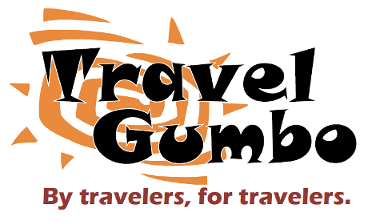

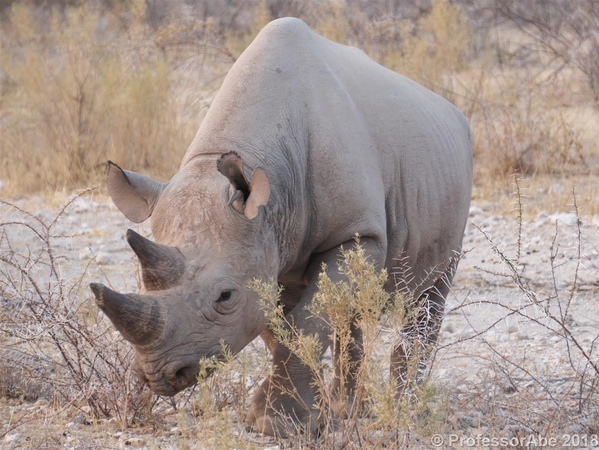
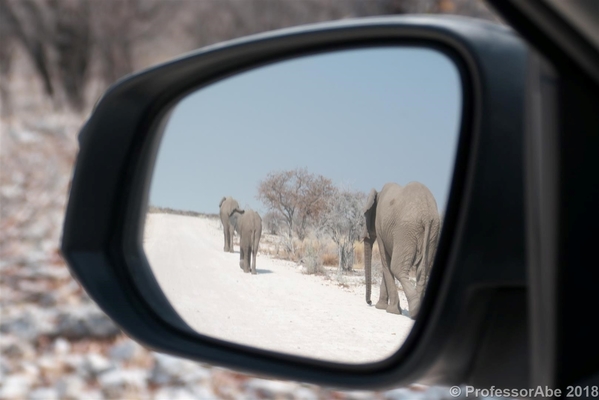

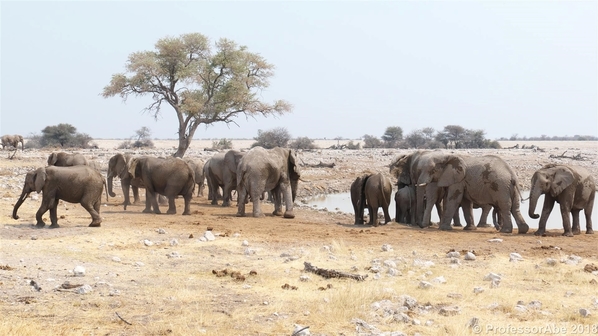
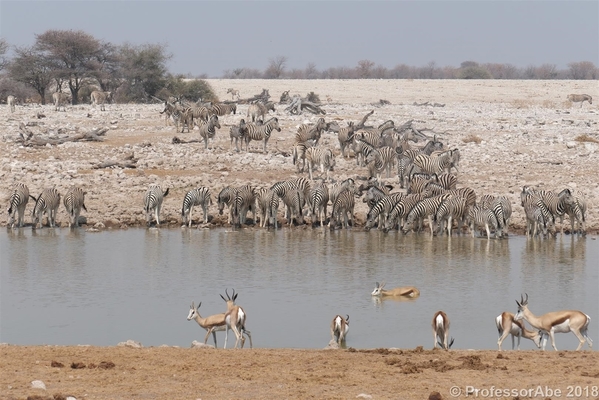

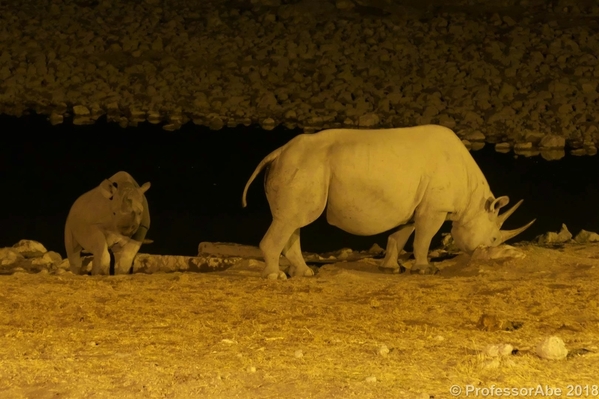






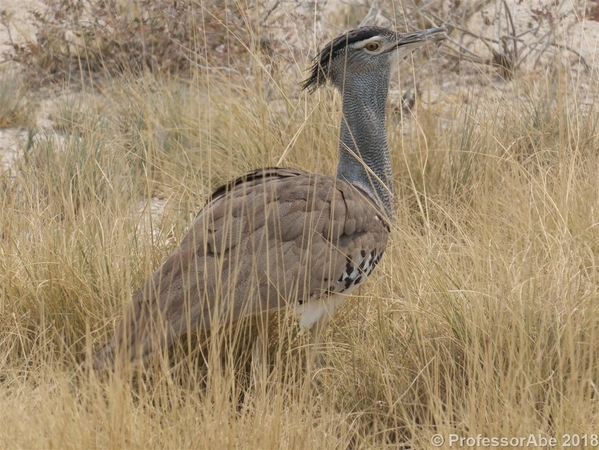





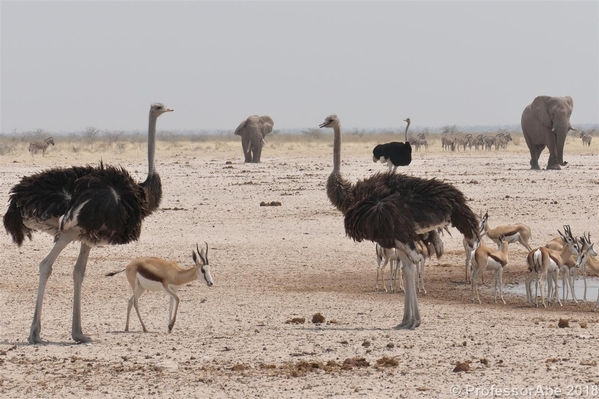
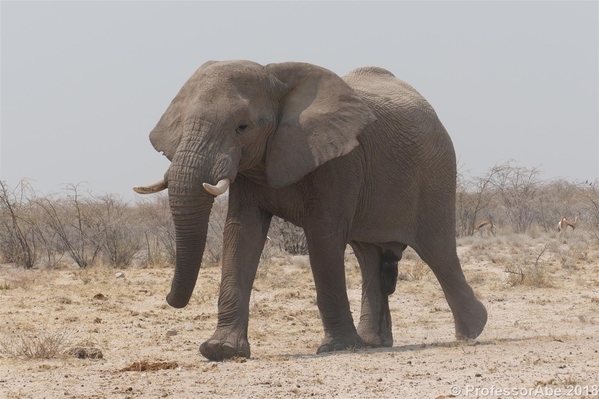



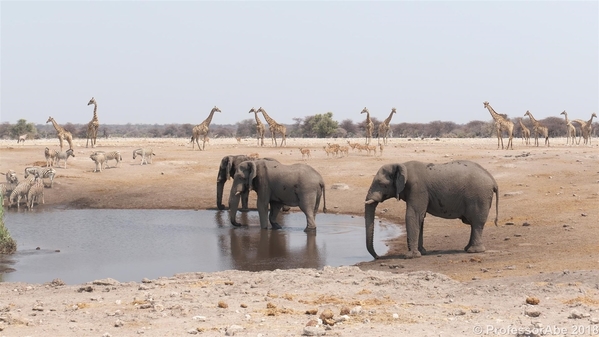
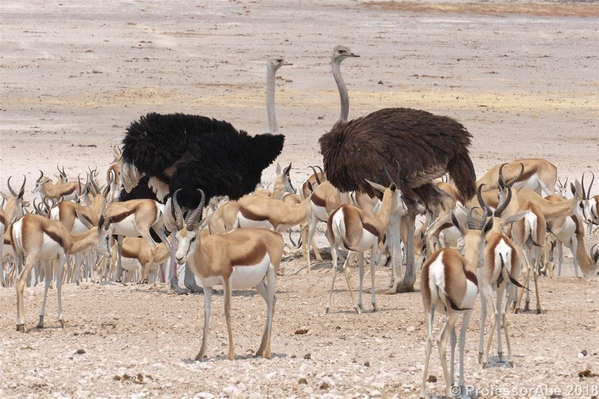
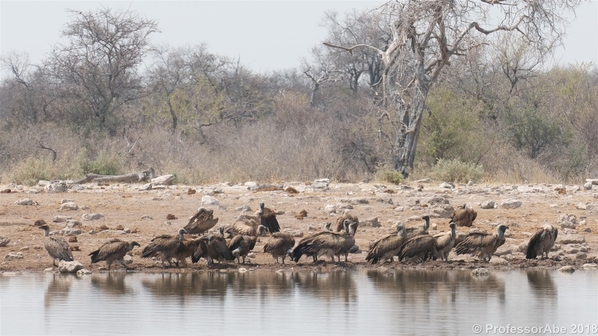


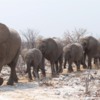





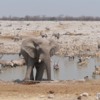

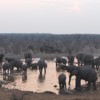
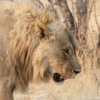
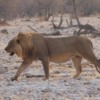
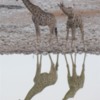

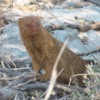

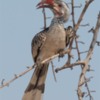












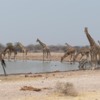
Comments (1)